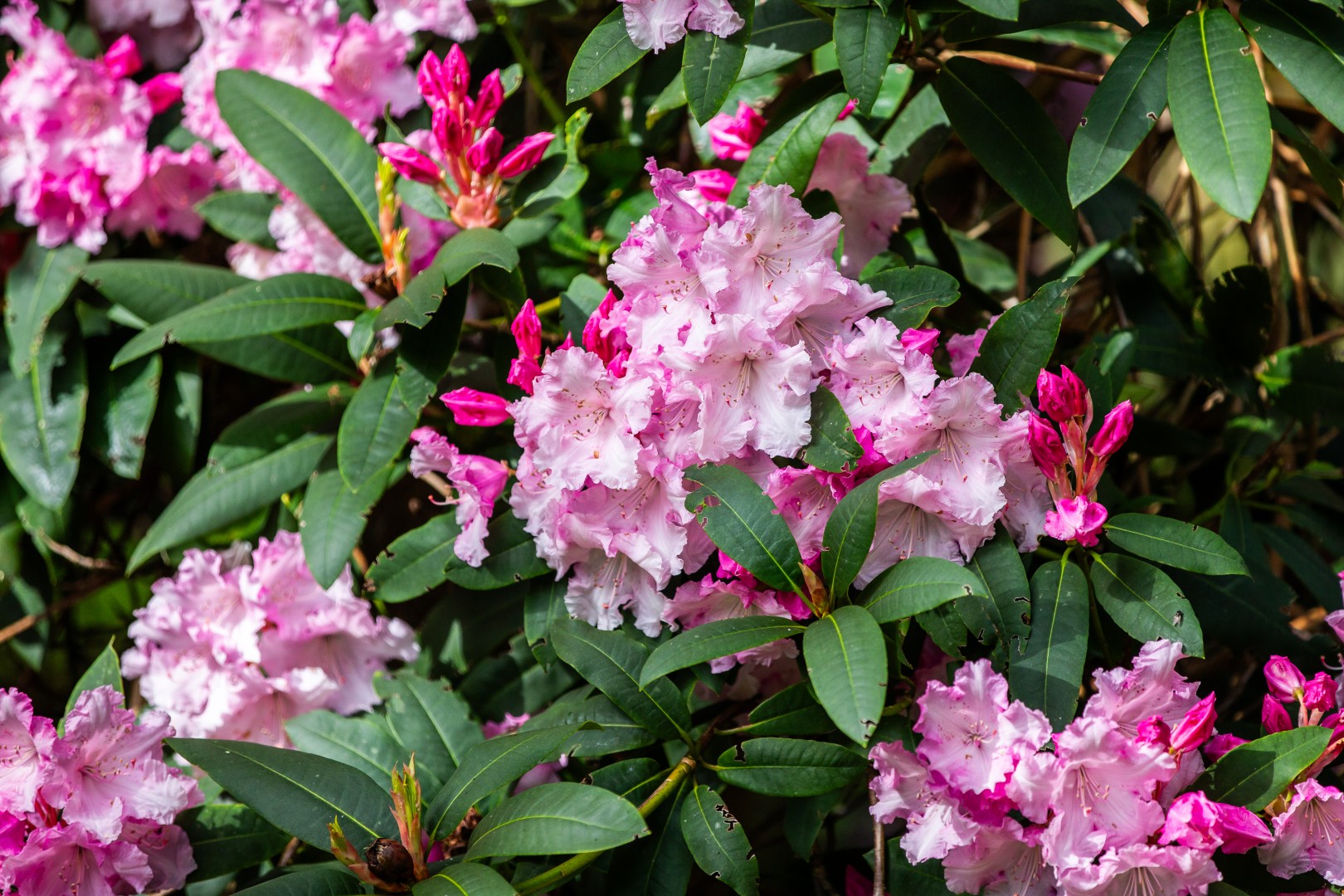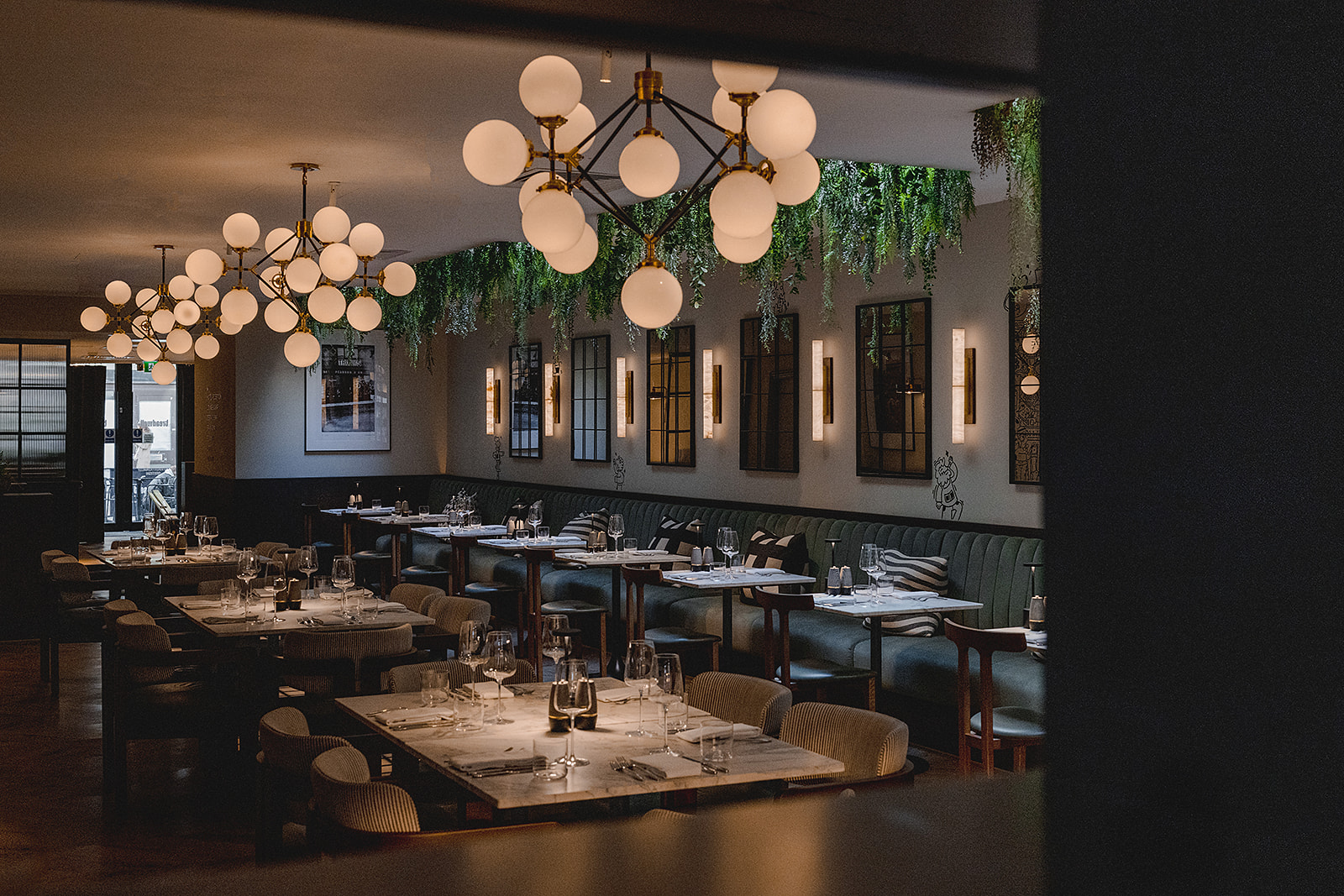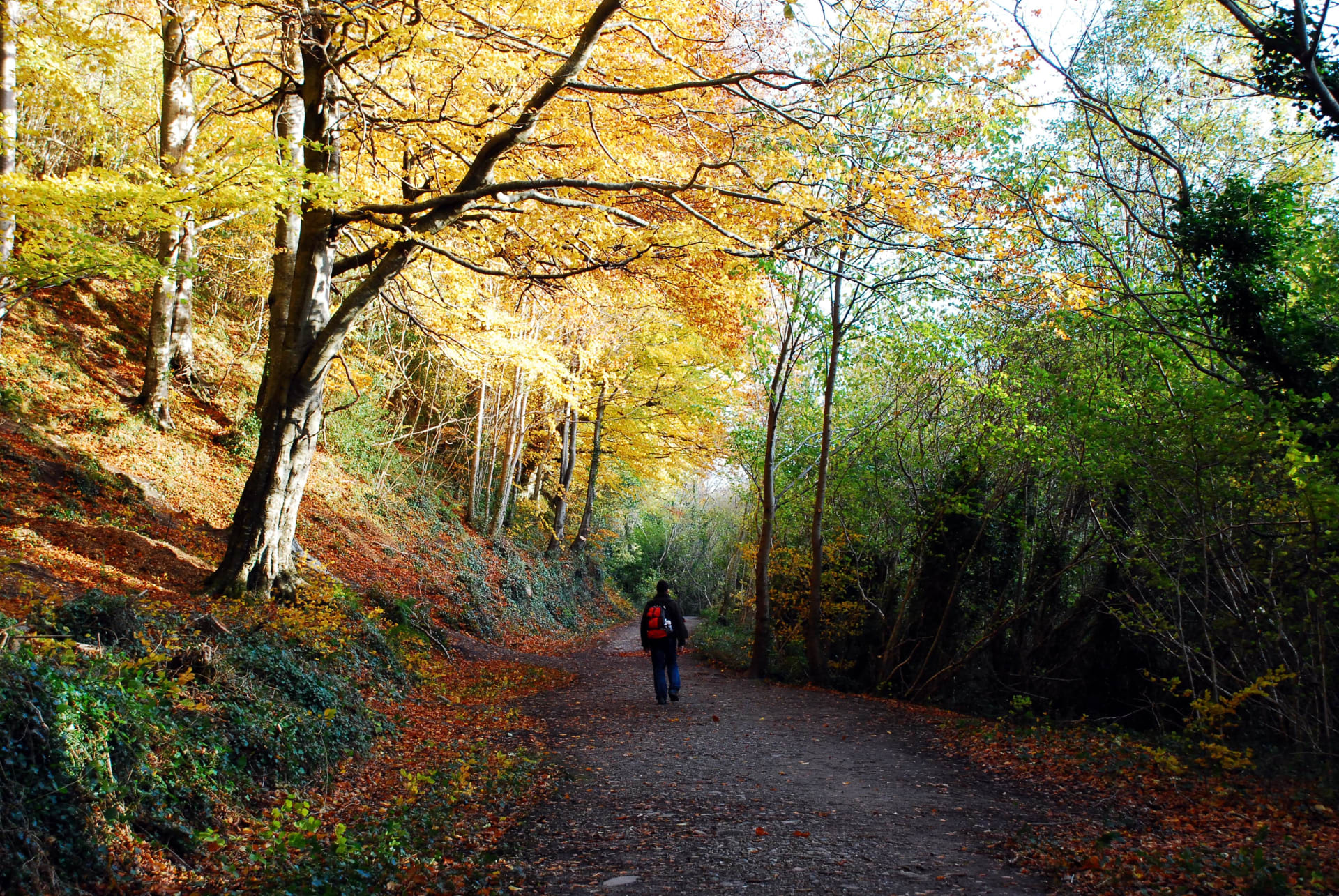Walking through an area planted with rhododendrons, azaleas and azaleodendrons when they are in bloom is a truly spectacular and frequently fragrant experience. Rhododendrons are usually medium or large evergreen shrubs, while azaleas tend to be smaller and may be evergreen or deciduous. Azalea flowers are often smaller but come in a more vivid array of shades.
Rhododendrons are often divided into four main groups: evergreen rhododendrons, Vireya rhododendrons (usually frost tender epiphytic shrubs from tropical areas of South East Asia), azaleas and azaleodendrons (a group of hybrids between deciduous azaleas and evergreen hybrid rhododendrons). There are approximately 1,000 different species in the wild, originating from Europe, Asia, Australasia, South West China, Tibet, Burma, Northern India and New Guinea but none are native to the UK. Unfortunately, many varieties are now threatened with extinction as their native habitats are lost. In cultivation, there are in the region of 25,000 named varieties, ranging in height with some varieties growing up to 25m (80ft) or forming prostrate ground level shrubs. They flower in a wide spectrum of colours, some having brightly coloured basal nectar pouches inside.
Growing in a diverse range of habitats from forests to alpine tundra, from high altitudes to sea level, this genus prefer to grow in dappled shade – although some rhododendrons will grow in a more open site if sheltered from cold, drying winds. The dwarf alpine species will grow in full sun, provided the soil does not dry out. They need sites which avoid frost pockets or exposure to early morning sun.
One of the main criteria of being able to grow this genus of evergreen and semi-evergreen trees and shrubs is that most require an acidic or ericaceous soil which has a pH of less than 7, with a pH of 5.0 to 6.0 being ideal. They require a moist but well-drained leafy, humus rich soil that does not dry out during summer. In Oxfordshire, such acidic soils are found in Boars Hill, Dry Sandford, Hitchcope Pits, Shotover, and Lye Valley Nature Reserve. Other sites include the Wychwood forest and Cornbury Park in Charlbury. However, to see a magnificent spectacle of rhododendrons and azaleas a drive out to Forestry England’s Westonbirt, The National Arboretum, near Tetbury in Gloucestershire is worth doing.
The Arboretum has over 200 species and varieties of rhododendrons and azaleas, which bloom from late February to early June with their most spectacular displays at the end of April and beginning of May (varying according to prevailing weather conditions). Westonbirt’s rhododendrons form a historic collection, some dating back to the earliest days of the Arboretum in the mid-nineteenth century, when there was a craze among the wealthy estate owners, such as the Holfords who established the Arboretum, to have the latest rhododendrons; inspired by the introduction of spectacular new species from Asia. Numerous new hybrids were speedily cultivated by nurseries in a huge range of colours and sizes to cater for this market and were often bred and named to order. As this genus of trees and shrubs have a long life, many can be between 100 and 150 years old.
Rhododendron Mrs R S Holford, named for Robert Holford’s wife, was introduced in the 1860s, described in the nursery catalogue as ‘inclined to be leggy ‘, flowering in May, it is a soft mauve pink. The offspring of the original plant located in the Old Arboretum can still be seen. Another hybrid variety is Rhododendron Alison Johnstone, bred by George Johnstone, a horticulturalist who created Trewithen, a garden in Truro in Cornwall, after he inherited the house there in 1904. Named after his wife, Mr Johnstone was rewarded for his efforts when he received the RHS award of merit in 1945. Another hybrid bred in the UK, which can now be found at Westonbirt, is Rhododendron Kewense, so-called because it is one of many hybrids was raised at Kew in the 1870s. You will also be able to enjoy the magnificence of Rhododendron griffithianum, originating from the Himalayas. Its namesake, William Griffith, was a botanist who collected more than 9,000 species in his career: according to his contemporaries the most by any single individual.
Growing Rhododendrons
If you would like to try growing rhododendrons on alkaline soil there are five varieties which are more tolerant: R augustinii, R ciliatum, R hippophaeoides, R Praecox and R triflorum. All are best planted in October or March/April. Even with acidic soil, you need to mix in plenty of neutral or acidic organic matter in the form of composted bark, leaf mould, decomposing pine or spruce needless. All rhododendrons are surface rooting so do not plant too deeply as their roots should just be covered. Apply a 7.5cm mulch of well-rotted garden compost and manure, chipped bark, gravel, grit and slate chippings in late autumn to late winter to provide frost protection and reduce water loss from the soil.
- Rhododendrons and azaleas grow best in areas of high rainfall. Tap water, especially in hard water districts, contains too much calcium so they require natural rainfall wherever possible. (If rainwater runs out, tap water can be used for a month or two during the drier summer months.)
- When grown in good, acidic soil, rhododendrons and azaleas generally do not need additional feeding. However, if planted in containers, they benefit from a liquid feed formulated for ericaceous plants. It is important not to overfeed as the roots and leaves can burn if over fertilised. They can all be susceptible to a number of pests and diseases, including powdery mildew and honey fungus, if not kept sufficiently watered. Phytophthora ramorum, also known as ramorum blight or sudden oak death, is a disease that affects rhododendrons.
- This genus of plants has many uses. Larger rhododendrons are excellent for woodland gardens, brightening shady areas and are more tolerant of growing in exposed sites, so also make good hedging. Compact hybrids are ideal for growing in containers and pots on shaded patios and provide a way of growing these acid-loving plants when your soil does not have the correct pH. Further, dwarf alpine varieties are perfect for rock gardens.
To find out more about Forestry England’s Westonbirt, The National Arboretum visit forestryengland.uk/westonbirt-the-national-arboretum









